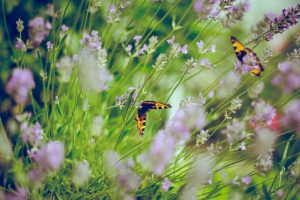 Why create a butterfly garden? Other than the obvious reason that butterflies are beautiful and their flight seems to bring a little magic everywhere they go. Butterflies are losing their natural habitat due to urbanization, deforestation and agriculture. You and your family can help by creating a butterfly sanctuary in your own backyard.
Why create a butterfly garden? Other than the obvious reason that butterflies are beautiful and their flight seems to bring a little magic everywhere they go. Butterflies are losing their natural habitat due to urbanization, deforestation and agriculture. You and your family can help by creating a butterfly sanctuary in your own backyard.
Butterflies, the iconic jewels of the sky, face a host of challenges in nature. Fluctuations in monarch populations have been typical over the decades however data shows a steady decline since 1997. Since 1996, The Center for Biological Diversity estimates 165 million acres of habitat have been lost to urbanization, deforestation and agriculture. Some years show this loss is due to severe weather events and fluctuations, while other years are due to changing agricultural practices associated with soy and corn production.
Milkweed is essential to Monarch survival. Milkweed once spread freely throughout crop land but the commercial use of herbicides has caused milkweed to become scarce. Pesticide use is also a growing threat to butterflies as many pesticides kill non-target insects and further degrade the butterfly’s habitat.
You can make an impact on the butterfly’s plight. Create a butterfly habitat in your own back yard by providing the following essentials and help remove some of the obstacles to the butterfly’s success.
Food
Start by planting Milkweed as it is an essential host plant to Monarch survival. Milkweed once spread freely throughout crop land but the commercial use of herbicides has caused milkweed to become scarce. When planting butterfly food plant en mass rather than dispersed. A few of our other favorites are…
land but the commercial use of herbicides has caused milkweed to become scarce. When planting butterfly food plant en mass rather than dispersed. A few of our other favorites are…
- Yarrow
- Coneflower
- Gold Banner
- Sage
- Indigo Bush
- A full list of other butterfly and caterpillar favorites can be found on our website.
Puddling Stations
Puddling stations provide needed minerals and are easy to create. A puddling station is a small damp area where butterflies can rest and recharge. A puddling station can be made with a shallow dish, sand and manure. This space should be kept moist. Patches of mud also work well. For more information on how to make a puddling station visit Birds and Blooms
Basking Spots
Even butterflies need to take a break every once in awhile. A nice flat rock in the sunniest area of your yard will give butterflies a place to rest and warm up.
Shelter
This may be the easiest step! Your yard is probably already full of perfect shelter items/areas. Trees, foliage, tall grasses, rock piles, cracks and crevices are preferred over manufactured butterfly houses. Butterflies, just like you, prefer the real thing too.

Pesticide Free
To sustain butterfly populations it is imperative to provide hospitable environments for caterpillars. Organic gardening – gardening without pesticides – is the best way to create a hospitable environment for butterflies. In your vegetable garden plant a few extra melon or tomato starters as host plants for the caterpillars . If you can tolerate a few leaves with holes the butterflies in your garden will appreciate it. A garden shared with caterpillars is rewarded with a garden filled with butterflies.
http://www.xerces.org/monarchs/

